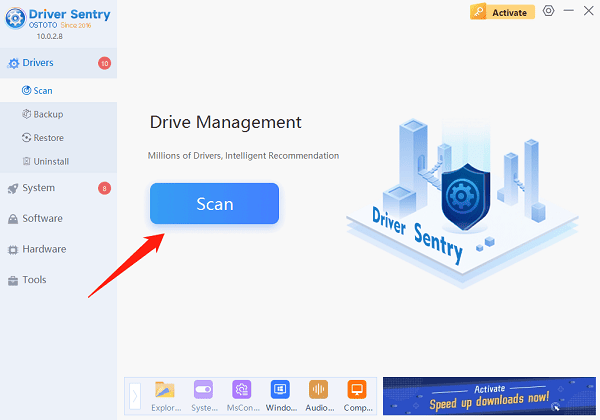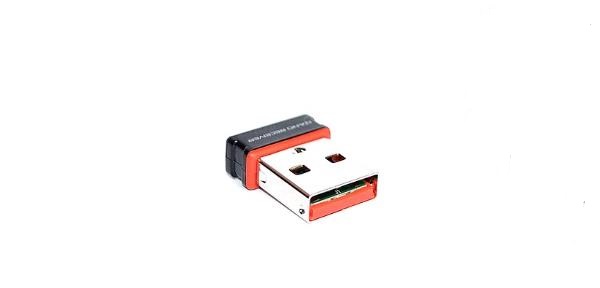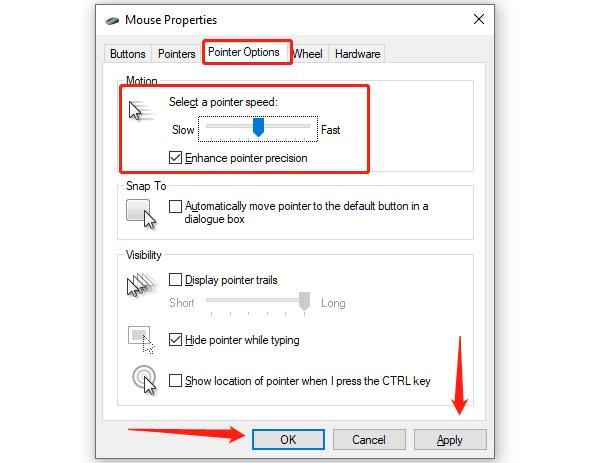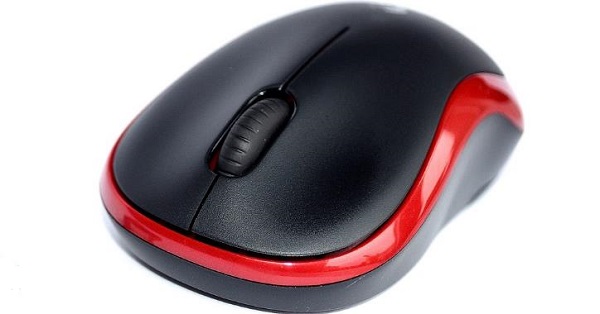
Wireless mouse are convenient, but sometimes they may stop working. This article offers solutions to help you quickly fix the issue.
1. Check the Mouse Battery
If your wireless mouse is battery-powered, the first thing you should check is whether the battery is depleted. Open the battery compartment, remove the battery, replace it with a new one, and then test if the mouse works again.
Sometimes, the incorrect installation of the battery can also prevent the mouse from functioning. Ensure the battery's polarity (positive and negative ends) is installed correctly.
2. Update the Driver
Outdated or corrupted drivers are common causes of wireless mouse malfunctions. Timely driver updates can effectively prevent mouse issues. We recommend using Driver Sentry to automatically detect and update drivers, saving time and reducing the risk of downloading or installing incorrect drivers.
Click the download button to get the latest version of Driver Sentry, install the software, and open it. Click "Scan".

After scanning, the software will show which drivers are missing or need updating. Find the mouse driver in the list and click the "Upgrade" button.
Once the update is complete, it's recommended to restart the computer to ensure the updated driver works properly.
3. Check the USB Receiver
Check if the USB receiver of your wireless mouse is properly plugged into the computer's USB port. You can try inserting the receiver into another USB port to see if the mouse starts working.

If your computer has multiple USB ports, try inserting the receiver into a different port. Sometimes, certain USB ports may cause the mouse to malfunction due to hardware or driver issues.
Some wireless mouse receivers have indicator lights that light up when the mouse receives a signal. If the indicator light doesn't turn on, it may indicate a malfunction in the receiver.
4. Adjust Mouse Sensitivity
On Windows, open the Control Panel and click on the "Mouse" option. If you're using a Mac, go to "System Preferences" and select "Mouse".
In the mouse settings window, find the "Pointer Options" or similar setting. You can adjust the sensitivity by moving the slider. If the mouse response is too slow or too fast, try adjusting the sensitivity to get a better experience.

After adjusting the sensitivity, test how the mouse moves on the screen to ensure it operates at the desired speed and accuracy.
5. Clean the Mouse
First, turn off the mouse to avoid accidental operations during cleaning.
Use a cotton swab or a soft cloth to gently clean the optical sensor on the bottom of the mouse. Dust or stains may affect the sensor's performance, causing the mouse to lag or stop working.
Wipe the surface of the mouse with a damp cloth, especially the buttons and scroll wheel, ensuring there is no dust or grease that might affect its use.
6. Reset Bluetooth Connection
If your wireless mouse is connected via Bluetooth, try unpairing the device first. In Windows, go to "Settings > Devices > Bluetooth & Other Devices", find the connected mouse, and select "Remove Device".
Turn off the mouse and then turn it back on. Wait for the mouse to enter pairing mode, then select the device in your computer to reconnect.

Ensure that the Bluetooth driver on your computer is up to date. If needed, update the Bluetooth driver.
7. Eliminate Signal Interference
The operating frequency of wireless mouse is typically 2.4GHz or 5GHz, and they may be subject to interference from other wireless devices, such as Wi-Fi routers or cordless phones. Ensure the mouse receiver is kept away from these devices.
If there are multiple wireless devices operating in the same area, try turning off some unnecessary devices to reduce interference.
Sometimes, the distance between the USB receiver and the mouse or obstacles blocking the signal can cause unstable transmission. Try moving the receiver closer to the computer to see if this improves the signal.
8. Try Another Device
Connect the wireless mouse to another computer or device to see if it works properly. If the mouse works on another device, the problem might be with the settings or hardware of the original device.
If your mouse uses a USB receiver, try using a different USB port on another device. If it's a Bluetooth connection, try connecting to another Bluetooth adapter or device.
By following these steps, you can systematically troubleshoot the cause of the wireless mouse issue and resolve it quickly. If the problem persists, it's recommended to seek professional help.
See also:
Guide to Connecting a Laptop to Dual Monitors
8 Ways to Fix Hogwarts Legacy Stuttering